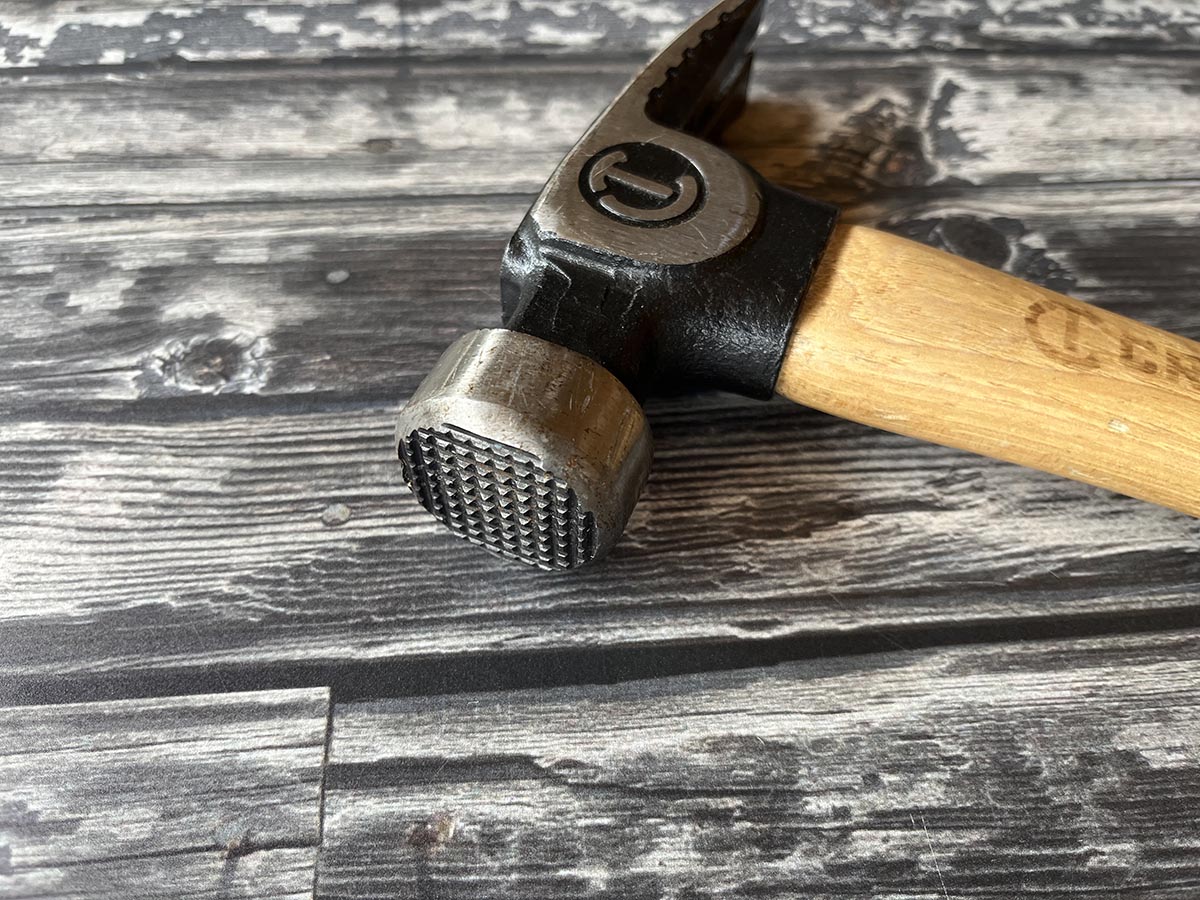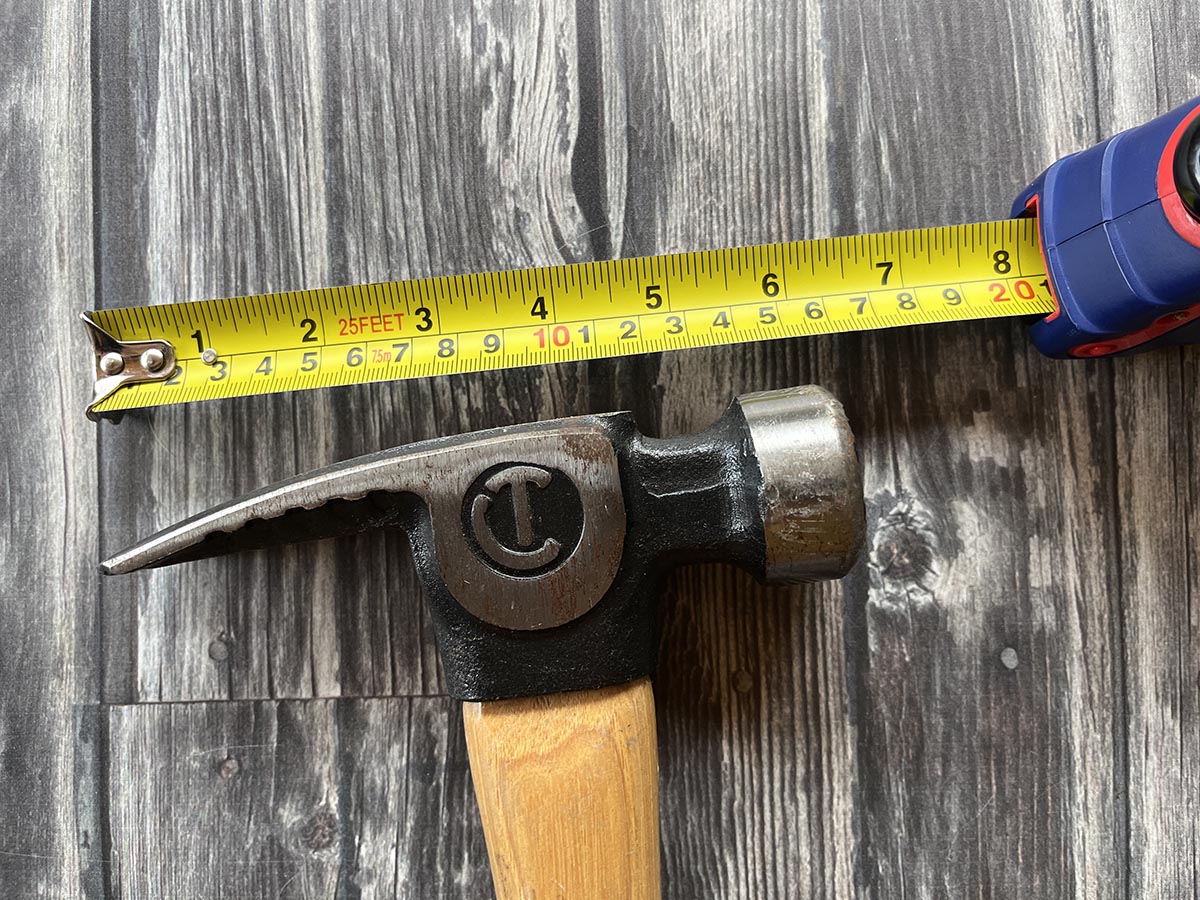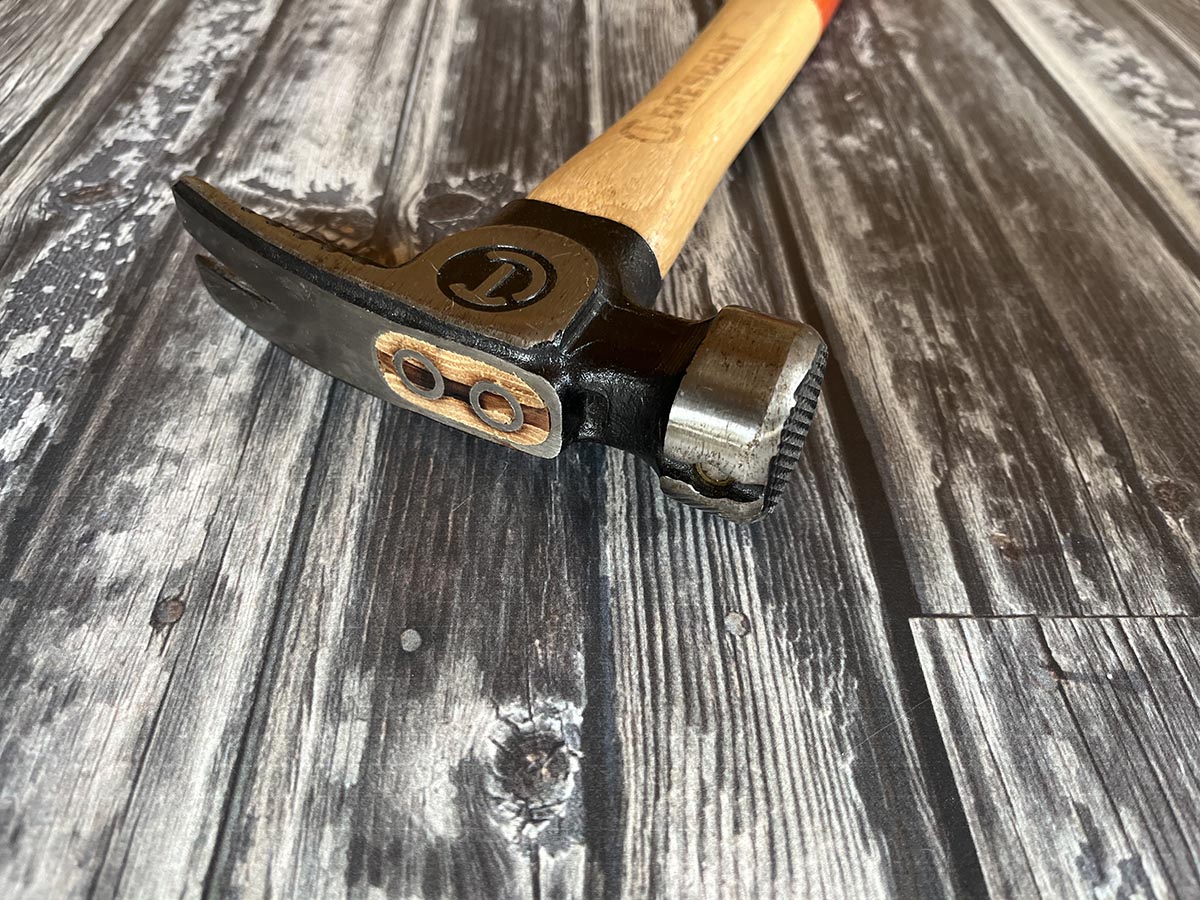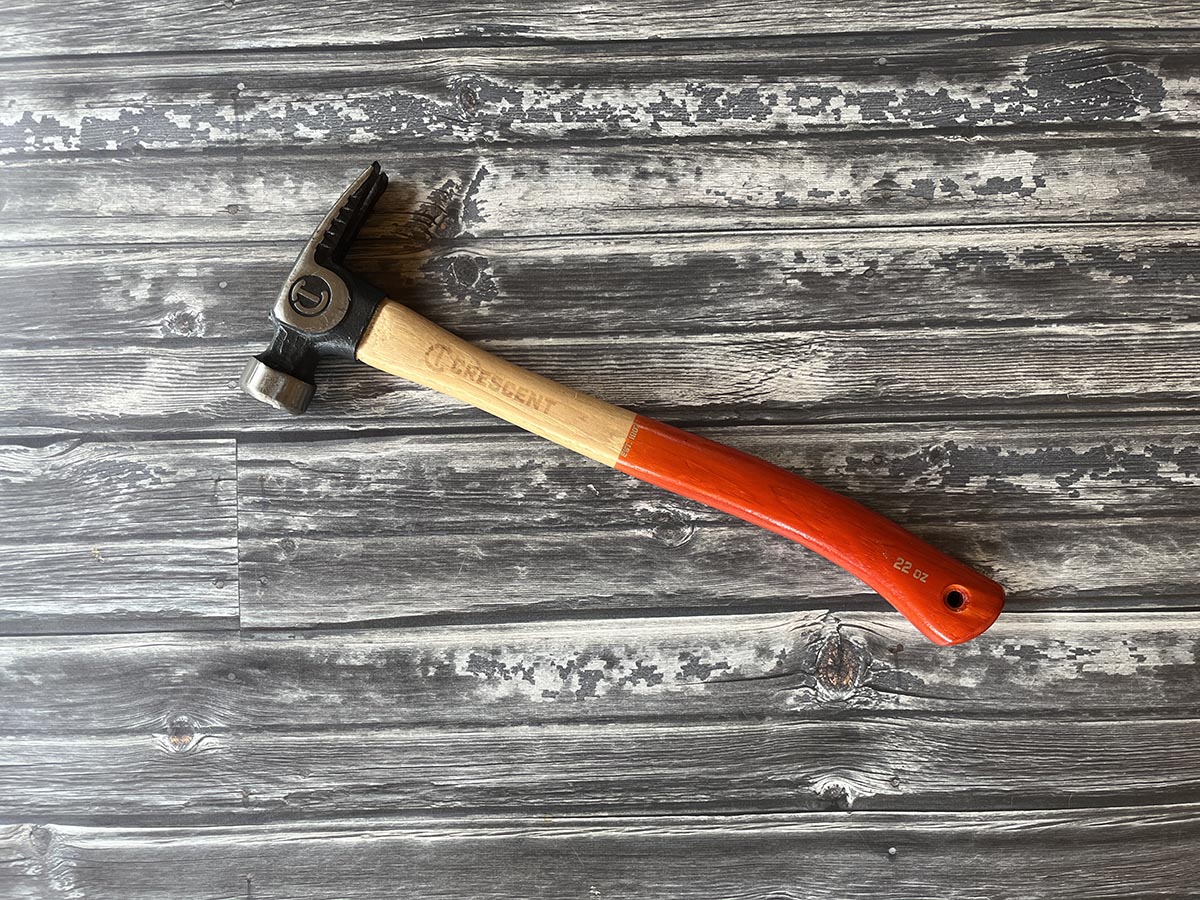

We may earn revenue from the products available on this page and participate in affiliate programs. Learn More ›
Rating: 5/5
I started building a small deck last year and I had to drive a few dozen 3½-inch framing nails into tight-grained lumber. After pounding the first one with a claw hammer, I knew I needed a bigger hammer. I spent some time shopping around and settled on the Crescent 22-ounce framing hammer. It features a 22-ounce steel head with a milled face, a magnetic nail starter, and a rip claw. The 16-inch handle is made of hickory wood and has an ergonomic “fawn’s foot” curved grip. It’s a pro-style hammer at a value price.
Professional framers build faster with less wear and tear on their bodies when they use framing nailers rather than pounding every nail with a framing hammer. But buying an expensive nailer didn’t make sense for my small project. I chose a framing hammer because of its multi-purpose nature. In various situations, a framing hammer can be a convenient alternative to a nail gun, pry bar, or hand sledge — a 3-in-1 tool that is easy to carry in a tool belt. Even with a nail gun, sometimes the gun doesn’t fully seat a nail, and a hammer can be used to finish driving it or pull it out. A framing hammer can also be used to align framing assemblies or for demolition work.
I couldn’t justify the cost of a framing nail gun for the rare moments when I might use it, but the hammer cost less than $30. It didn’t put a huge dent in my project budget, plus it isn’t gathering dust like a heavy-duty nail gun would. Since completing the backyard project, I’ve used it to hammer nails for concrete forms, disassemble wooden pallets, and other pounding, pulling, and prying jobs around the house and yard.
The wood handle feels great. Even when I pound thick spikes, it deadens the vibration that other handle types tend to transfer to the hand. The head weight and handle length seem to be a perfect pairing, and the forward curve at the handle base adds a little extra leverage. Even after a 10-hour workday, I don’t feel arm and wrist fatigue like I’ve felt doing similar work with my claw hammer.
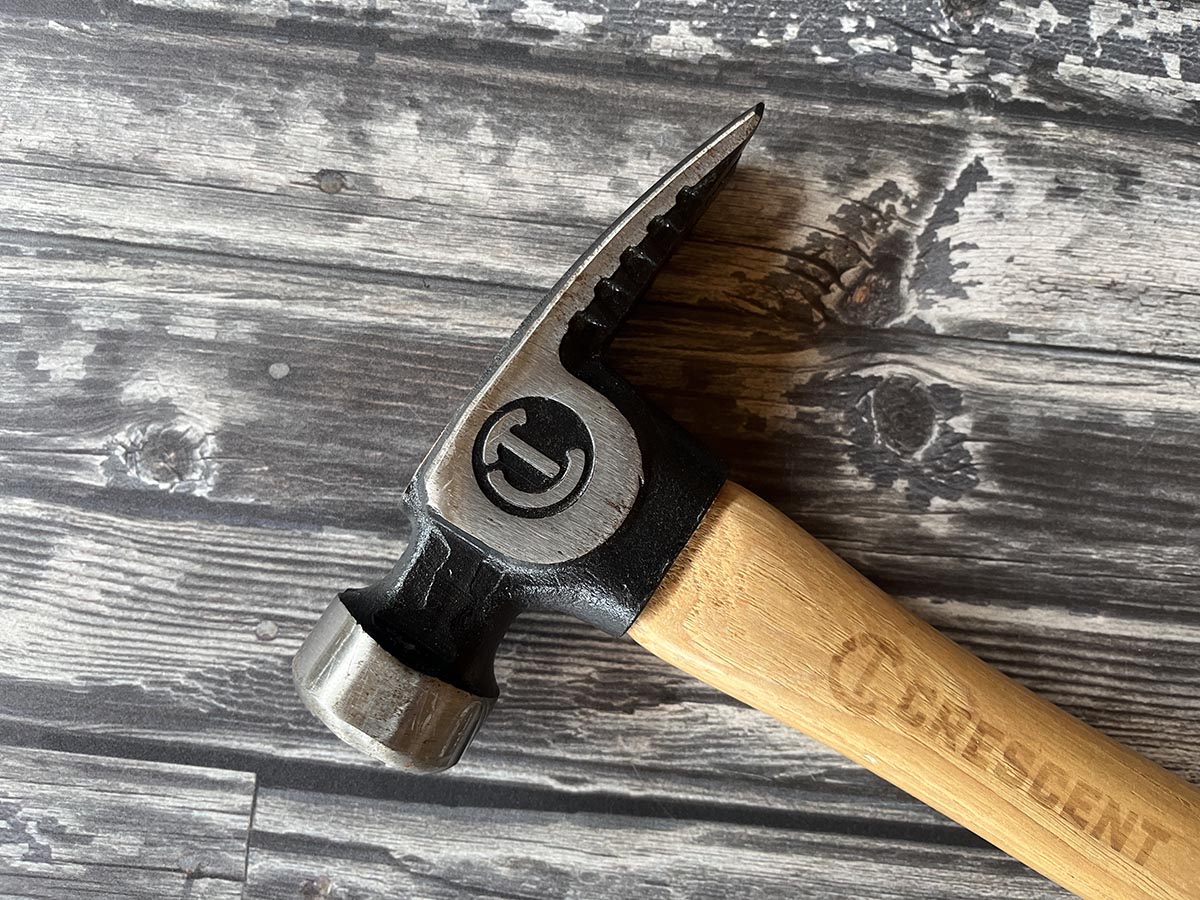
Buying the Crescent framing hammer was cheaper than even renting a framing nailer for a day, and it continues to pay back dividends. This quality hand tool is built to last. The longer handle and heavier head deliver more force to drive big nails with fewer swings than when I use my claw hammer, and it lets me apply at least as much leverage for pulling and prying as my 15-inch pry bar. I find myself reaching for the framing hammer all the time.

